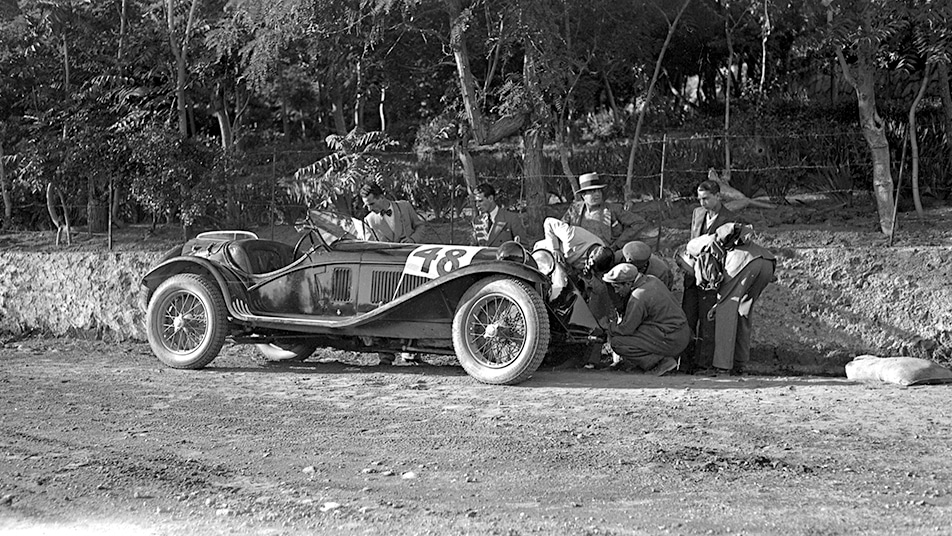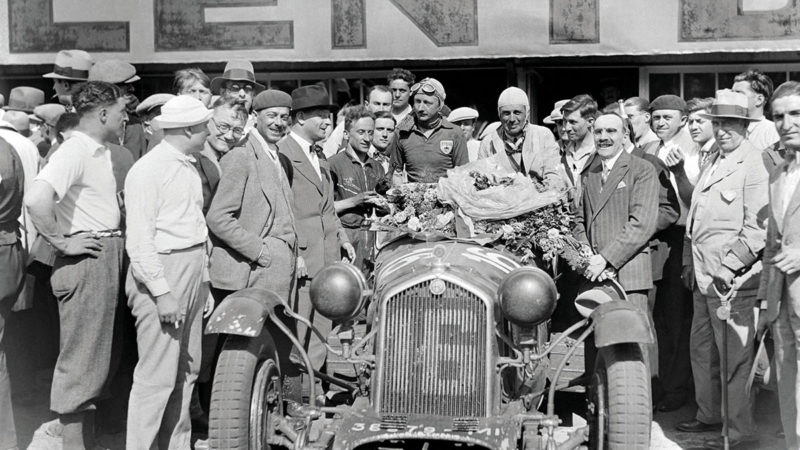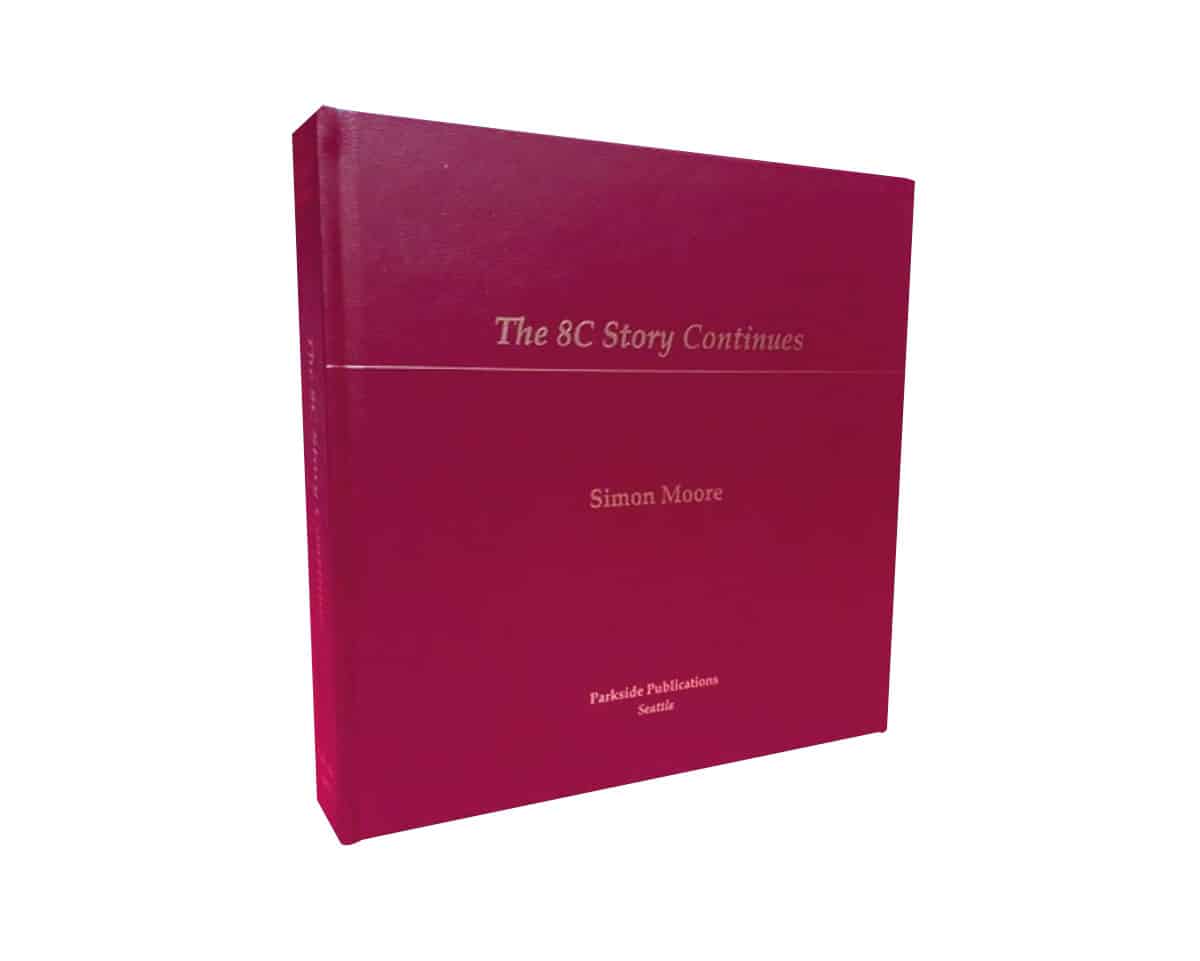The 8C Story Continues, book review
If you thought previous accounts of the 8C were definitive, then think again, writes Gordon Cruickshank. It’s an evolving story

Roadside investigation for Auricchio’s 8C2300 on the 7km hillclimb for the 1933 Coppa Vesuvio
Troncone
Must remember not to use the adjective ‘definitive’ in this review, because that’s just what I thought Simon Moore’s previous books would turn out to be, only he keeps demonstrating that there is no such thing as definitive – at least not until we get to the end of time. Until then, Simon will continue to root out and dredge up more lost, hidden and obscure information about his beloved supercharged Alfa Romeos, and he will continue to issue updates like this one, rightly called The 8C Story Continues, rather than risk suggesting that this will finally be the last word.
It seems remarkable now that, as comprehensive as it was, Simon’s first book was compiled without the help of Google or digital scanning. As he points out in his foreword he (like Motor Sport) relied on postal letters and sending photos through the mail. Since then the internet has opened a million potential research avenues and speeded communication radically, while a number of important photo archives have also become newly available. The results are contained in this heavyweight production, as crisply presented as the previous Parkside works with some truly wonderful photos used healthily large.
Impressively, most of these are fresh. Simon apologises that he’s had to use some poor photos here and there, but I certainly won’t be complaining that he has included somewhat rough colour photos of a long-chassis 2.3 driving through the Nigerian grassland – just part of a wonderful African diversion for this car, once raced by Tim Birkin. It must surely be the only Alfa which has carried a dead leopard on its back seat.
In contrast are the impressive colour photos from a 1948 German hillclimb of a special-bodied 2.9, the remarkable image quality of what seems to be an Alfa-borne family picnic by a Swiss lake, or a magnificent shot of Rudolf Caracciola threading his dusty 2.3 past gravel, tramlines and cobbles on the 1932 Mille Miglia – a powerful reminder that drivers then faced hazards we have forgotten existed.
“One of the importances of a book like this is to crystallise the histories of individual cars”
While you could, as Simon himself observed to me, view this as a picture book of rare and beautiful Alfa Romeos it is really an adjunct to his three previous masterworks The Legendary 2.3, The Immortal 2.9 and The Magnificent Monopostos, as frequent references to these makes clear. Most of the updates concern the 2.3, some the 8C2900 and a few are about monopostos. Often he is correcting himself when new information has turned up in the 21 years since the 2.3 book appeared, which means that you really need to have a copy of this in one hand and the earlier volume in the other. Each of those perhaps ought to have had a warning “but hang on for any updates…” Which reminds me of Jenks once reprimanding me for cavalierly saying, “Oh well, we can put a correction in the next issue,” and his retort: “In 20 years someone reading the report won’t know to look in the following issue.”
One of the importances of a book like this is to crystallise the histories of individual cars and to try to unravel muddled or partial chassis histories, and identify clear fakery. The temptation, of course, increases with the value, and supercharged Alfa Romeos are valuable with a capital V. People have attempted to profit by constructing a car which seems to be missing, or modifying a similar car’s identity to fill a chassis number gap, and that’s where the indefatigable research of historians like Simon serves as an important brake on such activities.

The 1931 Le Mans victory of Tim Birkin and Lord Howe was the first of four for the legendary 2.3
Gamma-Keystone via Getty Images
And on the prices of fudged cars… Things became more confusing for the less expert in 2000 when Argentinian outfit Pur Sang began producing exact 8C2300 replicas. That’s not a sin as long as nobody pretends that the resulting machine was built in Italy in the 1930s. And buying one does give you an exciting vehicle which you could drive every day if you wanted without endangering history.
That’s not to say that if you have some genuine parts of a desirable historic car you should never be allowed to build them up with new or borrowed material into a complete car – that’s acceptable as long as the facts are recorded. Even some small parts therefore become valuable and worth much effort in tracking down. One of these truffle trails I know a little about, since it involved my friends Bill Binnie and the late Dave George hunting through Austrian scrapyards where the trail of a missing 2.3 had gone cold. Finally they struck gold – or at least rusty metal.
Funnily enough, my first thought as Dave George excitedly showed me photos of these remains was “but will Simon Moore believe it?” Yes he does, says the book, because their photos showed what they had found in situ, and once Dave had assembled various original elements, including a rescued real Monza body, with new material they had what is to all intents and purposes an Alfa Romeo Monza, though with a complicated and fragmented history. But because all that is recorded here everyone will know just what it is.
That’s just one of the sometimes tortuous histories the book presents, for no car, particularly a competition vehicle, comes down the years to us utterly untouched. As Bill Boddy once wrote in these pages, “You could argue that as soon as you refill the tyres with new air a car stops being totally original.”
Simon Moore is painstakingly thorough, but I don’t think even he has gone to the effort of taking air samples.
 |
The 8C Story Continues Simon Moore
|
